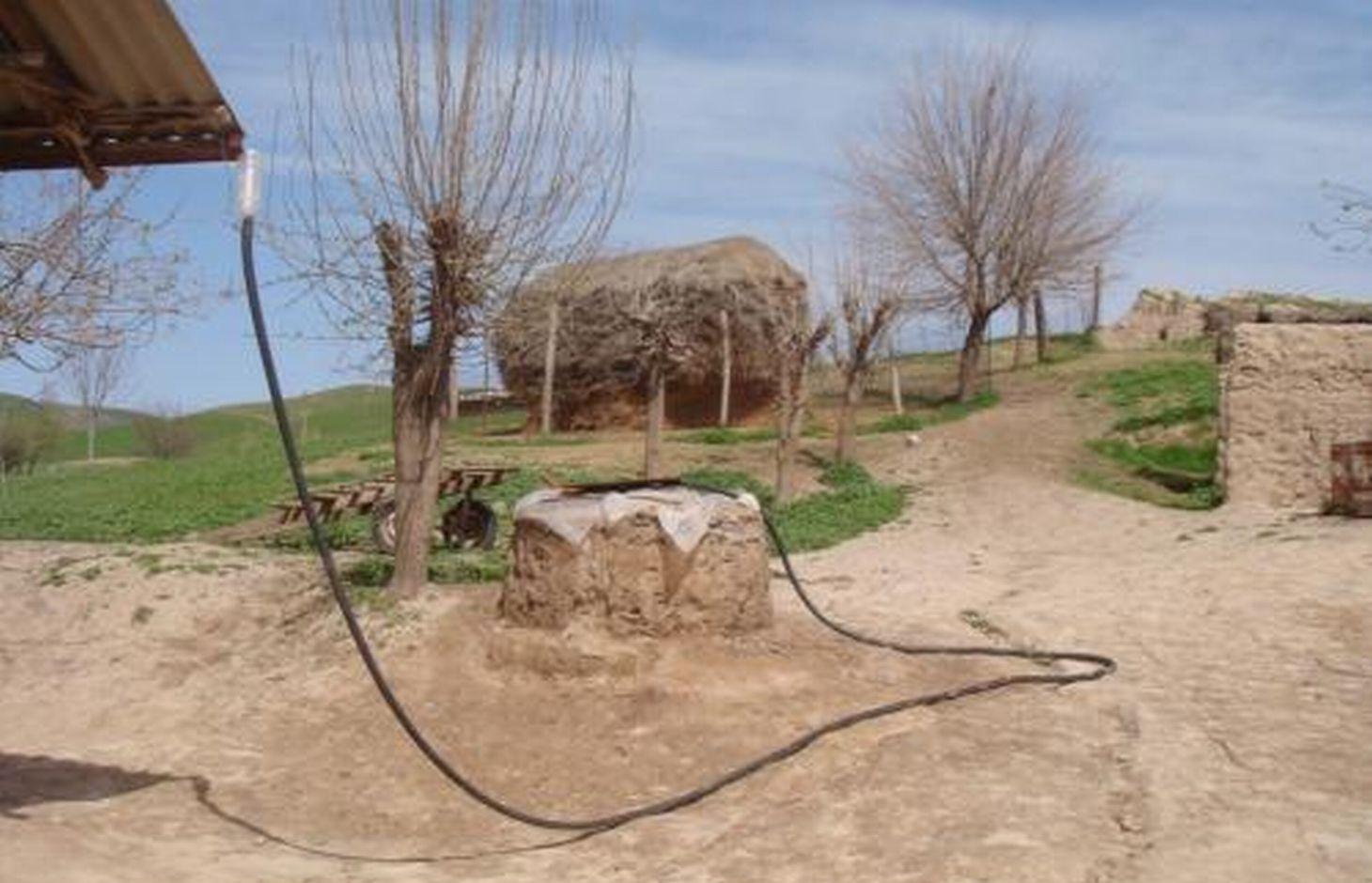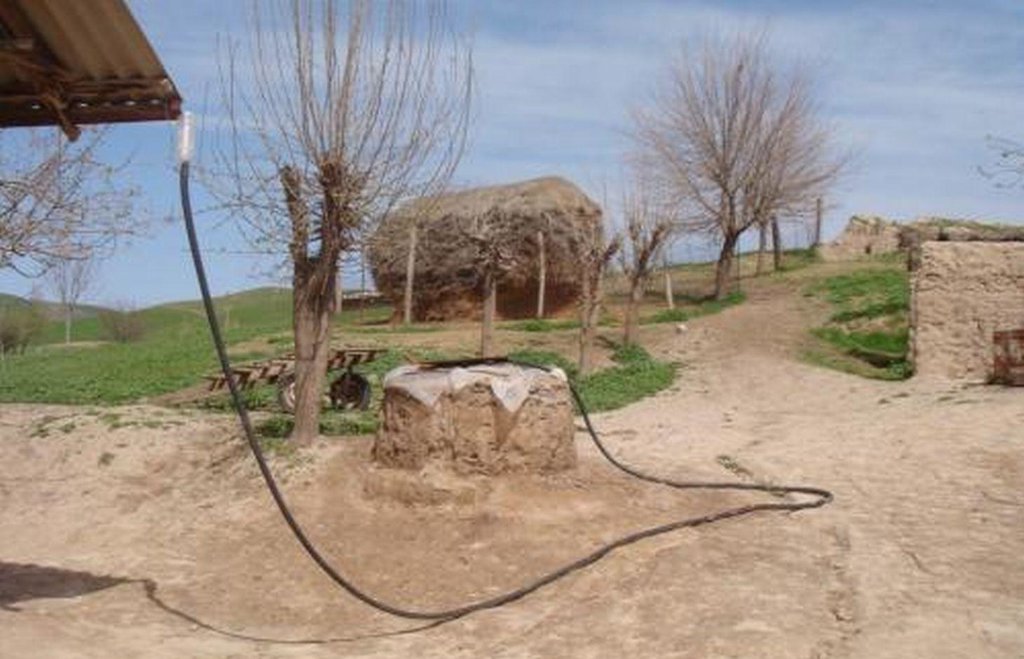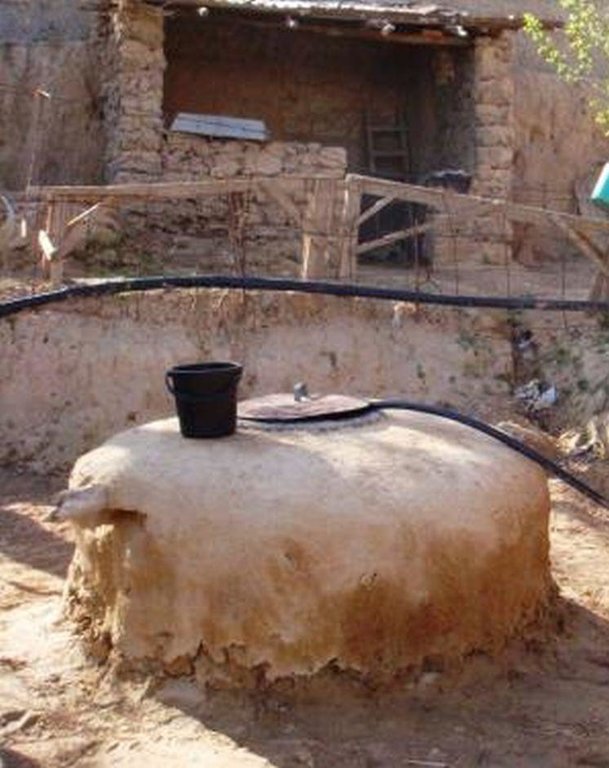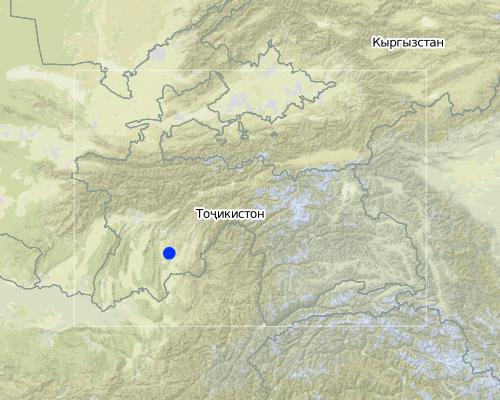Сбор дождевой воды с крыш и ее хранение в земляном баке, обернутом полиэтиленом [Таджикистан]
- Создание:
- Обновить:
- Составитель: Daler Domullojonov
- Редактор: –
- Рецензент: David Streiff
Чамъоварии оби борон аз руи боми хона
technologies_1446 - Таджикистан
- Полная аннотация в формате PDF
- Полная аннотация в формате PDF для вывода на печать
- Полная аннотация в формате интернет-страницы
- Полная аннотация (неотформатированно)
- Сбор дождевой воды с крыш и ее хранение в земляном баке, обернутом полиэтиленом: 2 ноября 2021 г. (public)
- Сбор дождевой воды с крыш и ее хранение в земляном баке, обернутом полиэтиленом: 4 апреля 2018 г. (inactive)
- Сбор дождевой воды с крыш и ее хранение в земляном баке, обернутом полиэтиленом: 15 августа 2019 г. (inactive)
- Сбор дождевой воды с крыш и ее хранение в земляном баке, обернутом полиэтиленом: 19 июля 2017 г. (inactive)
- Сбор дождевой воды с крыш и ее хранение в земляном баке, обернутом полиэтиленом: 6 мая 2017 г. (inactive)
- Сбор дождевой воды с крыш и ее хранение в земляном баке, обернутом полиэтиленом: 14 марта 2017 г. (inactive)
Просмотреть разделы
Развернуть все Свернуть все1. Общая информация
1.2 Контактные данные специалистов и организаций, участвующих в описании и оценке Технологии
Специалист по УЗП:
Название организации (-ий), содействовавших документированию/оценке Технологии (если применимо)
Deutsche Welthungerhilfe (Welthungerhilfe) - ТаджикистанНазвание организации (-ий), содействовавших документированию/оценке Технологии (если применимо)
Pilot Program for Climate Resilience Tajikistan (PPCR Tajikistan) - Таджикистан1.3 Условия, регламентирующие использование данных, собранных ВОКАТ
Когда были собраны данные (на местах)?
06/04/2011
Составитель и ответственный(-ые) специалист(-ы) согласны с условиями, регламентирующими использование собранных ВОКАТ данных:
Да
2. Описание Технологии УЗП
2.1 Краткое описание Технологии
Определение Технологии:
Использование земляного бака с полиэтиленовым покрытием для удержания дождевой воды, собираемой с крыши дома.
2.2 Подробное описание Технологии
Описание:
Земляной накопительный бак является недорогостоящим сооружением, который может использоваться для сбора воды с крыши. Яма подготовлена и обернута полиэтиленом для предотвращения протечки. Верхушка ямы покрыта металлической крышкой для обеспечения доступа. Крыша дома снабжена пластиковым водостоком, который собирает дождевую воду и через воронку вода по пластиковой трубе поступает в земляной бак. Вода в земле затем может быть использована для полива растительных культур (особенно в засушливые летние месяцы), канализацию и потенциально питьевую воду.
Purpose of the Technology: Население южного Таджикистана состоит в основном из большого количества дехкан и поэтому очень зависит от огородных участков. Так как население в районе разрастается, то давление на землю увеличивается. Последняя и так уже находится в плохом состоянии, так как начинает деградировать через вырубку лесов, чрезмерным выпасом пастбищ и общей чрезмерной эксплуатацией. В дождливые сезоны с осени и до весны, в южном Таджикистане выпадает много осадков, однако недостаток воды с поздней весны до конца осени создает проблему. В течение дождливого сезона, много воды теряется в связи с поверхностным стоком, а эта вода могла бы удерживаться в баке и использоваться в засушливые сезоны. Она может использоваться для полива культур с целью увеличения урожайности, а также для обеспечения многообразия и качества культур. Дополнительная вода может также использоваться для канализации, питья и водопоя домашнего скота.
Establishment / maintenance activities and inputs: Для создания подобного водоудерживающего бака необходимо выполнить несколько поэтапных шагов. При подготовке, необходимо произвести грубый расчет потенциального объема собираемой дождевой воды. Затем, необходимо выбрать местоположение бака таким образом, чтобы минимизировать расходы и обеспечить легкий доступ к нему. Создание бака возле больших деревьев не рекомендуется, так как полиэтиленовое покрытие может быть повреждено корнями.
Для фактических работ по созданию бака выполняются следующие работы:
(1) выемка бассейна, (2) штукатурка внутренних стен при помощи ровно растворенной смеси мелкозернистой почвы и воды, (3) облицовка стен бака двойным слоем полиэтилена, (4) соединение внутренних листов полиэтилена с покрытием бака при помощи шнура для того, чтобы в любое время его можно было вытащить с бака для очистки от наносов, (5) покрытие бака любым доступным материалом, таким как грунт, смесь воды и соломы, оставив при этом отверстие в 0.25 x 0.25м для извлечения воды, (6) и в конце соединить крышу с баком при помощи пластиковой трубы. Для того, чтобы избежать накопление грязной воды, трубу необходимо соединить с баком спустя некоторое время после того, как начались дождевые осадки.
2.3 Фотографии, иллюстрирующие Технологию
2.5 Страна/ регион/ места, где применяется Технология, информация о которых собрана в данной Анкете
Страна:
Таджикистан
Административная единица (Район/Область):
Таджтктстан
Более точная привязка места:
Темурмалик
Map
×2.6 Сколько лет применяется данная Технология
Если год начала применения Технологии достоверно неизвестен, дайте примерную оценку:
- менее 10 лет назад (недавняя)
2.7 Внедрение Технологии
Укажите, как именно Технология УЗП была внедрена:
- через проекты/ внешнее вмешательство
Пояснения (тип проекта и т.д.):
The technology was developed through a Welthunger Hilfe Project and promotion in the local communities started in 2008.
3. Классификация Технологии УЗП
3.1 Основные цели и задачи реализации Технологии
- повышение производства
3.2 Текущий(-ие) тип(-ы) землепользования на территории, где применяется Технология
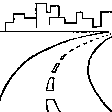
Населенные пункты, инфраструктура
- Жилищная застройка, другие здания
Замечания:
Kitchen garden
Пояснения:
Major land use problems (compiler’s opinion): неэффективное управление естественными ресурсами, что обычно видно на лицо, так как население выбрасывает потенциальные органические удобрения вместо того, чтобы укладывать их на поля. Неправильная технология вспашки, которая приводит к увеличению эрозии, вырубке лесов и расходу топливных материалов в неэффективных печах и духовка. Чрезмерный выпас пастбищ ведет к их деградации
Major land use problems (land users’ perception): Недостаток воды
Constraints of settlement / urban
3.3 Дополнительная информация о землепользовании
Число урожаев за год:
- 1
Поясните:
Longest growing period in days: 180
Longest growing period from month to month: Март - Ноябрь
3.4 Категория УЗП, к которой относится Технология
- сбор атмосферных осадков
3.5 Распределение Технологии по площади
Охарактеризуйте пространственное распространение Технологии :
- равномерно-однородное применение на определенной площади
Если Технология равномерно применяется на той или иной территории, укажите ее приблизительную общую площадь:
- 10-100 км2
3.6 Мероприятия УЗП, выполняемые в рамках Технологии

инженерные мероприятия
- И5: Дамбы, водохранилища, пруды
Пояснения:
Main measures: structural measures
3.7 Основные проблемы деградации земель, на решение которых направлена Технология

деградация водных ресурсов
- Ва: почвенная засуха
- Вуп: изменение объема поверхностного стока
- Взп: снижение качества поверхностных вод
Пояснения:
Main type of degradation addressed: Да (Ha): аридность, Ди (Hs): изменение количества поверхностной воды, Дз (Hp): снижение качества поверхностной воды
Main causes of degradation: управление землеи, обезлесивание / удаление естественной растительности (включая лесные пожары), чрезмерный выпас, вводимый ресурс и инфраструктура: (дороги, рынки, распределение водных пунктов другие .
Secondary causes of degradation: интенсивная эксплуатация населением, бедность / богатство
3.8 Предотвращение и снижение деградации земель, или восстановление нарушенных земель
Укажите цель Технологии по отношению к деградации земель :
- восстановление/ реабилитация нарушенных земель
Пояснения:
Main goals: rehabilitation / reclamation of denuded land
Secondary goals: prevention of land degradation, mitigation / reduction of land degradation
4. Технические характеристики, мероприятия по практической реализации, вложения и стоимость
4.1 Технический рисунок, иллюстрирующий Технологию
Автор:
Daler Domullojonov, 14, Giprozem str., Dushanbe, Tajikistan
4.2 Спецификация / пояснения к техническому рисунку
Technical knowledge required for field staff / advisors: низкий
Technical knowledge required for land users: средний
Main technical functions: контроль над концентрированными стоками: удержание/улавливание, контроль над концентрированными стоками: дрена / отводка, сбор воды / повышение водоснабжения
Dam/ pan/ pond
Depth of ditches/pits/dams (m): 3.5
Width of ditches/pits/dams (m): 1.2
Length of ditches/pits/dams (m): 1.2
4.3 Общая информация по необходимым вложениям и стоимости
другая/ национальная валюта (название):
TJSomoni
Укажите обменный курс между долларом США и местной валютой (если уместно): 1 доллар США =:
4,5
Укажите среднюю дневную заработную плату наемных работников:
6.60
4.4 Мероприятия, необходимые для начала реализации
| Деятельность | Тип мероприятия | Сроки | |
|---|---|---|---|
| 1. | Ручная выемка бака; выравнивание и штукатурка; покрытие бака | Инженерные | once in the beginning |
| 2. | покупка полиэтиленовых листов и трубы, подготовка и укладка | Инженерные | once in the beginning |
4.5 Вложения и затраты, необходимые для начала реализации
| Опишите затраты | Единица | Количество | Затраты на единицу | Общая стоимость на единицу | % затрат, оплаченных землепользователями | |
|---|---|---|---|---|---|---|
| Оплата труда | Manual digging of pond | Persons/day | 2,0 | 30,0 | 60,0 | 100,0 |
| Оплата труда | Placing sheet | Persons/day | 0,1 | 30,0 | 3,0 | 100,0 |
| Строительные материалы | Wooden poles for pond | poles | 4,0 | 5,0 | 20,0 | 100,0 |
| Строительные материалы | Earth | tons | 0,1 | 45,0 | 4,5 | 100,0 |
| Строительные материалы | Polyethylene sheet | square meters | 10,0 | 2,3 | 23,0 | 50,0 |
| Строительные материалы | Cord | meter | 20,0 | 0,025 | 0,5 | 50,0 |
| Строительные материалы | Plastic pipe | meter | 5,0 | 2,0 | 10,0 | 100,0 |
| Строительные материалы | Bucket | pieces | 1,0 | 4,5 | 4,5 | 100,0 |
| Общая стоимость запуска Технологии | 125,5 | |||||
Пояснения:
Duration of establishment phase: 24 month(s)
4.6 Поддержание/ текущее обслуживание
| Деятельность | Тип мероприятия | Сроки/ повторяемость проведения | |
|---|---|---|---|
| 1. | Очистка бака (вымывание наносов) | Инженерные | once every year |
| 2. | Замена полиэтиленовых листов; покрытие | Инженерные | once every 2 years |
| 3. | Changing polyethylene sheet;covering | Управленческие | once per 2 years |
4.7 Стоимость поддержания/ текущего обслуживания ( в год)
| Опишите затраты | Единица | Количество | Затраты на единицу | Общая стоимость на единицу | % затрат, оплаченных землепользователями | |
|---|---|---|---|---|---|---|
| Оплата труда | Cleaning of pond (washing out sediments) | Persons/day | 0,1 | 45,0 | 4,5 | 100,0 |
| Оплата труда | Changing polyethylene sheet (every 2 years) | Persons/day | 1,0 | 10,0 | 10,0 | 100,0 |
| Строительные материалы | Polyethylene sheet | square meters | 10,0 | 2,3 | 23,0 | 100,0 |
| Строительные материалы | Cord | square meters | 1,13 | 8,85 | 10,0 | 100,0 |
| Строительные материалы | Earth | tons | 0,05 | 45,0 | 2,25 | 100,0 |
| Общая стоимость поддержания Технологии | 49,75 | |||||
Пояснения:
Вышеуказанные расходы были рассчитаны на создание одного водоудерживающего бака. В одном домохозяйстве может быть создано несколько баков для сада..
4.8 Наиболее значимые факторы, влияющие на стоимость затрат
Опишите наиболее значимые факторы, влияющие на стоимость затрат:
Тип почвы в Таджикистане очень подходит для создания водоудерживающих баков, рабочая сила обеспечивается самим землепользователем, а пластиковые трубы могут быть изготовлены из пустых пластиковых бутылок. Полиэтиленовые листы и шнуры необходимо купить в магазине.
5. Природные и социально-экономические условия
5.1 Климат
Среднегодовое количество осадков
- < 250 мм
- 251-500 мм
- 501-750 мм
- 751-1000 мм
- 1001-1500 мм
- 1501-2000 мм
- 2001-3000 мм
- 3001-4000 мм
- > 4000 мм
Пояснения/ комментарии по осадкам:
Average annual precipitation is 575 mm (according to data from the last 15 years), most of which falls between late autumn and spring time.
Агроклиматическая зона
- полузасушливая
Thermal climate class: temperate
5.2 Рельеф
Склоны (преобладающие):
- пологие (0-2%)
- покатые (3-5%)
- покато-крутые (6-10%)
- крутые (11-15%)
- очень крутые (16-30%)
- чрезвычайно крутые (31-60%)
- обрывистые (>60%)
Формы рельефа:
- плато/ равнины
- гребни хребтов/холмов
- склоны гор
- склоны холмов
- подножья
- днища долин
Зона высотной поясности:
- 0-100 м над уровнем моря
- 101-500 м н.у.м.
- 501-1000 м н.у.м.
- 1001-1500 м н.у.м.
- 1501-2000 м н.у.м.
- 2001-2500 м н.у.м.
- 2501-3000 м н.у.м.
- 3001-4000 м н.у.м.
- > 4 тыс. м н.у.м.
Комментарии и дополнительные сведения по условиям рельефа/ топографии :
Altitudinal zone: Mainly communities in this range
5.3 Почвы
Средняя мощность почв:
- поверхностные (0-20 см)
- неглубокие (21-50 см)
- умеренно глубокие (51-80 см)
- глубокие (81-120 см)
- очень глубокие (> 120 см)
Гранулометрический состав (верхнего горизонта):
- тонкодисперсный/ тяжёлый (глинистый)
Содержание органического вещества в верхнем горизонте:
- низкое (< 1%)
Если возможно, приложите полное описание почв или укажите доступную информацию, например тип почв, рH/ кислотность почв, ёмкость катионного обмена, содержание азота, содержание солей и т.д.
Soil fertility is medium and if it is not overused the fertility can be increased.
Topsoil organic matter: Usually locals collect cow dung and use it as fuel.
Soil drainage / infiltration is medium
Soil water storage capacity is medium because the loess material contains clay material
5.4 Доступность и качество воды
Уровень грунтовых вод:
5-50 м
Доступность поверхностных вод:
недостаточны/ отсутствуют
Качество воды (без обработки):
питьевая вода плохого качества (необходима обработка)
Комментарии и дополнительная информация по качеству и количеству воды:
Ground water table can also be below 50 m.
Availability of surface water is so poor du to deforestation the natural water balance is disturbed.
5.5 Биоразнообразие
Видовое разнообразие:
- низкое
5.6 Характеристика землепользователей, применяющих Технологию
Доходы из других источников:
- 10-50% всех доходов
Относительный уровень достатка:
- плохой
Индивидуальное или коллективное хозяйство:
- частное/ домовладение
Пол:
- женщины
- мужчины
Укажите другие важные характеристики землепользователей:
Land users applying the Technology are mainly common / average land users
Population density: < 10 persons/km2
Annual population growth: 1% - 2%
5.7 Средний размер земельных участков, арендуемых или находящихся в собственности землепользователей, применяющих Технологию
- < 0,5 га
- 0,5-1 га
- 1-2 га
- 2-5 га
- 5-15 га
- 15-50 га
- 50-100 га
- 100-500 га
- 500-1000 га
- 1000-10000 га
- > 10000 га
Считается ли это мелким, средним или крупным хозяйством (по местным масштабам)?
- мелкое
5.8 Собственность на землю, права на земле- и водопользование
Землевладелец:
- государственная
- индивидуальная, оформленная в собственность
Право землепользования:
- индивидуальное
Право водопользования:
- индивидуальное
5.9 Доступ к базовым услугам и инфраструктуре
медицинское обслуживание:
- плохой
- средний
- хорошая
образование:
- плохой
- средний
- хорошая
технические консультации:
- плохой
- средний
- хорошая
занятость (вне хозяйства):
- плохой
- средний
- хорошая
рынки:
- плохой
- средний
- хорошая
электроснабжение:
- плохой
- средний
- хорошая
транспорт и дорожная сеть:
- плохой
- средний
- хорошая
водоснабжение и канализация:
- плохой
- средний
- хорошая
финансовые услуги:
- плохой
- средний
- хорошая
6. Воздействия и заключительные положения
6.1 Влияние Технологии УЗП в пределах территории ее применения
Социально-экономическое воздействие
Продуктивность
производство сельскозяйственных культур
производство кормов
производство продуктов животноводства
Доступность и качество воды
доступность питьевой воды
Количество до применения УЗП :
120 litres
Количество после применения УЗП:
12000 litres
Комментарий/ пояснения:
Water storing capacity of household increased
доступность воды для скота
доступность оросительных вод
Доходы и затраты
доходы хозяйства
Количество до применения УЗП :
0
Количество после применения УЗП:
100
Комментарий/ пояснения:
vegetables and greens are available for own consumption
объем работ
Комментарий/ пояснения:
no need to carry water
Социальное и культурное воздействие
продовольственная безопасность/ самообеспечение
Livelihoods and human well-being
Экологическое воздействие
Водный цикл/ поверхностный сток
количество воды
Комментарий/ пояснения:
more water available
сбор воды/ водоудержание
Комментарий/ пояснения:
more water available
поверхностный сток
Комментарий/ пояснения:
only in kitchen garden
6.3 Подверженность и чувствительность Технологии УЗП к постепенным изменениям климата и экстремальным погодным явлениям/ стихийным бедствиям, связанным с изменением климата (в понимании землепользователей)
Постепенное изменение климата
Постепенное изменение климата
| Сезон | Тип изменения климата/ экстремального явления | Насколько успешно Технология справляется с этим? | |
|---|---|---|---|
| среднегодовые температуры | увеличилось | хорошо |
Экстремальные явления, связанные с изменением климата (стихийные бедствия)
Погодные стихийные бедствия
| Насколько успешно Технология справляется с этим? | |
|---|---|
| местные ливневые дожди | хорошо |
| местные ураганы | хорошо |
Стихийные бедствия климатического характера
| Насколько успешно Технология справляется с этим? | |
|---|---|
| засухи | плохо |
Гидрологические стихийные бедствия
| Насколько успешно Технология справляется с этим? | |
|---|---|
| регулярные наводнения (выход рек из берегов) | плохо |
Другие воздействия, связанные с изменением климата
Другие воздействия, связанные с изменением климата
| Насколько успешно Технология справляется с этим? | |
|---|---|
| сокращение вегетационного периода | хорошо |
Пояснения:
Для того чтобы минимизировать ущерб полиэтилена и испарение, водосбор должно быт
закрыто. Так как водосбор находится в земле температура останется нормальним. Ёсли уменьшается осадки сбор воды уменьшается.
6.4 Анализ эффективности затрат
Насколько получаемый результат сопоставим с первоначальными вложениями (с точки зрения землепользователей)?
Эффективность затрат в краткосрочной перспективе:
очень позитивное
Насколько получаемый результат сопоставим с текущими расходами по поддержанию технологии (с точки зрения землепользователей)?
Эффективность затрат в краткосрочной перспективе:
очень позитивное
Пояснения:
До внедрение технологии, семья могло тратить примерно 44.5 Д США в месяц для покупки одного грузовика воды. Водосбор стоит 25 Д США и после сезона даждей может обеспечить водой 4 месяца водой.
6.5 Внедрение Технологии
- более 50%
Если возможно, дайте количественную характеристику (число домохозяйств и/или площадь применения):
600 households (in an area of 10-100km^2)
Среди применяющих Технологию землепользователей, какова доля лиц, применяющих её по собственной инициативе, т.е. без какого-либо материального стимулирования со стороны?
- 10-50%
Пояснения:
58% of land user families have adopted the Technology with external material support
350 land user families have adopted the Technology with external material support
Comments on acceptance with external material support: В данных начальных стадиях проекта, им было обеспечено 50% от расходов только лишь на полиэтиленовые листы и веревки.
42% of land user families have adopted the Technology without any external material support
250 land user families have adopted the Technology without any external material support
Comments on spontaneous adoption: После уведенного преимущества технологии и высокого коэффициента выгоды, многие люди в общине и соседних кишлаках повторили данную технологию у себя. Имеется сильная тенденция (рост) к самостоятельному внедрению технологии.
There is a strong trend towards spontaneous adoption of the Technology
6.7 Сильные стороны/ преимущества/ возможности Технологии
| Сильные стороны/ преимущества/ возможности по мнению землепользователей |
|---|
| Легко и быстро установить и поддерживать. |
| Сильные стороны/ преимущества/ возможности по мнению составителя или других ключевых специалистов |
|---|
|
Недорогая технология и может быть выполнена с помощью доступных местных материалов How can they be sustained / enhanced? Распространение данных идей в районах с недостатком воды через местные консультационные служды/НПО или местных жителей |
|
Сокращает время и усилия для сбора воды, а также расходы на покупку воды How can they be sustained / enhanced? Распространение различных методов и технологий водосбережения заинтересованными и линейными службами |
|
Увеличение доступа к воде в целях питья и канализации How can they be sustained / enhanced? Создание больших по объему и/или количеству баков |
|
Обеспечение водой для орошения в засушливые месяцы, в связи с этим, улучшение урожайности и многообразия растительных культур How can they be sustained / enhanced? Семинар и обучение технологиям садоводства для оптимизации использования дополнительного водоснабжения |
| Для садов и для домашнего хозяйства доступно больше воды |
6.8 Слабые стороны/ недостатки/ риски Технологии и пути их преодоления
| Слабые стороны/ недостатки/ риски по мнению землепользователей | Возможные пути их преодоления/снижения? |
|---|---|
| The polyethylene only lasts for 2-4 years. | To increase the number of layers or use a thicker polyethylene sheet |
| Слабые стороны/ недостатки/ риски по мнению составителя или ответственных специалистов | Возможные пути их преодоления/снижения? |
|---|---|
| Полиэтиленовые листы имеют ограниченный срок службы | Найти более толстый и плотный материал, или применять его в много слоев |
| Срок службы полиэтилена составляет от 2 до 4 лет | Увеличить количество слоев или использовать более толстые полиэтиленовые листы |
| Водонепроницаемые листы могут быть повреждены мышами или большими насекомыми |
7. Справочные материалы и ссылки
7.2 Ссылки на опубликованные материалы
Название, автор, год публикации, ISBN:
Brochure - Converting drought prone areas into productive gardens! Low cost options to improve rainwater harvesting in Southern Tajikistan rain fed areas …. and beyond! 2009
Где опубликовано? Стоимость?
Welthungerhilfe, Temurmalik office,
Название, автор, год публикации, ISBN:
Training film - Simple ways to improve management of kitchen gardens in Southern Tajikistan rain fed areas …. and beyond. 2009
Где опубликовано? Стоимость?
Welthungerhilfe, Temurmalik office
Название, автор, год публикации, ISBN:
Welthungerhilfe project final narrative report (144-912) - 2010
Где опубликовано? Стоимость?
Welthungerhilfe, Temurmalik office
Ссылки и модули
Развернуть все Свернуть всеСсылки
Нет ссылок
Модули
Нет модулей


